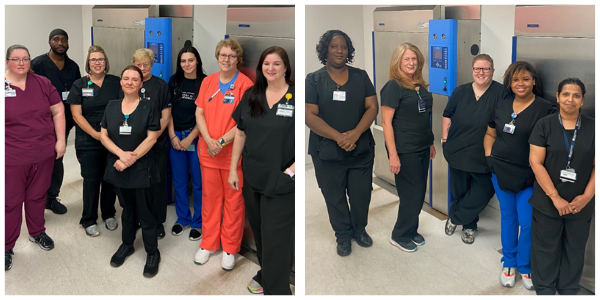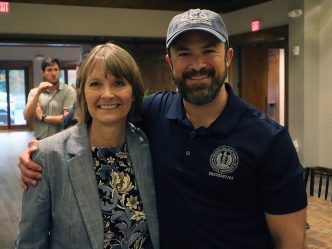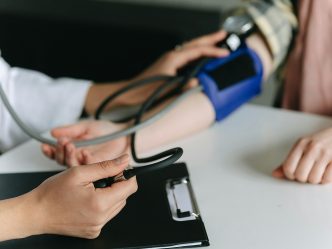It’s 6 a.m. and the DCG is dark. The elevators are dormant. No one is typing at their keyboards. And clinics are locked up tight. But in one department, employees are hurrying in to start the first shift of the day.
“They’re the first ones in, and the last ones out,” said Robert Paist, Director of Clinical Operations for the DCG. “Central Sterilization starts at 6 a.m. and ends at 10 p.m.”
Central Sterilization is responsible for cleaning and sterilizing all devices used in all dental and medical procedures, including inspecting, sorting, disassembling, reassembling, manual and mechanical cleaning, biological processes, equipment operations and storage and distribution of supplies. The department’s staff work regular clinical days, but also ADEX/CITA (CRDTS) exams, mock board exams and other special board certification exercises throughout the year – often requiring weekend work. Temperatures are cold to prevent bacterial growth. Standards are high and meticulously recorded to meet national standards.
“Our people are the backbone of operations,” Paist said. “It’s not the processes. It’s the people. If we don’t have knowledgeable people who are reliable and hard-working, we don’t have clinical operations.”
And there is no room for error. Central Sterilization processed 424,271 items in 2021. To put it into perspective, that’s almost one instrument per minute in a year (there are 524,600 minutes in a year, as fans of musical theater know). And during COVID-19, even when clinical operations were minimized, their workload did not cease.
“Sterilization had to learn new processes such as the reprocessing and tracking of N95 masks based off of the CDC, FDA, and manufacturers recommendations,” Paist said. “Our sterilizer had a capacity of 16 masks every 40 minutes, which meant that staff often had to work over to meet clinical demands.”
In addition, students still needed education. That meant that the focus for the department shifted from clinical to pre-clinical, but with a continuing intense demand for instrumentation.
“We still needed to clean, sterilize and turn over supplies. The methods for sterilization stay the same, but the demand was higher because of additional protocols. Students still needed practice in simulation labs and residents were still seeing patients,” Paist said.
Paist said that Sterilization employees are the first line of defense in clinical safety: “These are the people who make sure that when providers are ready to treat patients, operations are up and running to continue treatment and education.”
Left Photo: (L-R) Wendy Miller Central Sterilization and Instrument Control Manager; Terrence Dunbar, Sterile Supply Specialist; Catrina Alabaugh, Sterile Supply Specialist; Holly Thompson, Sterile Supply Specialist; Peggy Spence, Sterile Supply Rehire Retiree; Kalina Weathington, Sterile Supply Specialist; Deb Pitman, Senior Sterile Supply Specialist; Daisy Cornelius, Senior Supply Specialist
Right Photo: (L-R) Zoa Waller, Sterile Supply specialist; Rheagan Stevens, Sterile Supply Specialist; Andranika Jerido, Sterile Supply Specialist; Tency Alapatt, Sterile Supply Specialist. Not pictured: Norma Miller, Sterile Supply Specialist
 Augusta University
Augusta University




